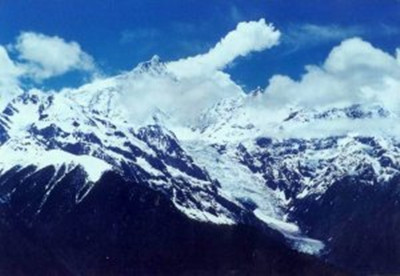(单词翻译:单击)
Sometimes the biggest finds are the smallest finds.
有时候,重大发现源于很小的发现。
Researchers examining a segment of siltstone taken fromground along the Beard more glacier in Antarctica foundsomething unexpected. They found a fly.
研究人员在南极比尔德莫尔冰川采集回来的一块粉砂岩中意外地发现了苍蝇。
Well, not exactly a fly.
准确地说,不是苍蝇,
They found a fly fossil–it's a segment ofthe exoskeleton, the protective shell, of a fly larva.
而是苍蝇的化石。一块保护幼虫的外骨骼。
While the larvae are still growing, they areprotected by a thin shell.
在薄壳的保护下,幼虫还在发育。
And where there's larval shell, there are flies.
幼虫的蛹壳证明了苍蝇的存在。
So what are flies doing in Antarctica?
那么,苍蝇怎么会在南极呢?

It's much too cold there for flies.
南极冰冷的气候不适宜苍蝇生长啊!
And the closest fly-friendly location, South America,is thousands of miles away.
反而,最适宜苍蝇生存的地方—南非,却远在几千里之外。
Part of the answer is that the fly fossil is ancient–it was found with a number of other fossilized things that have been dated between three million and seventeen million years old.
正解可能是因为这块苍蝇的化石和一起发现的其它化石可以追溯到300万到700万年前了。
It'spossible that the fly lived during a period when sea levels were much lower there than they noware.
很可能,苍蝇生长的那个时期,海水没有现在那么高,
Lower sea levels means wider continents–think of standing on the edge of a beach andhaving the water pull back.
这意味着陆地面积更大。想象自己站在海边,浪打回来。
And wider continents means it's more likely that living things mighttravel across the gap.
广阔的陆地面积让生物更有可能跨越于大陆间。
Or maybe not. Maybe flies are much older than anyone thought.
另种可能是苍蝇在地球上生存的时间比我们想象的还要久远。
We know that what we nowcall Antarctica was once connected to both South America and Australia.
要知道,现在的南极曾经和南美大陆及澳大利亚大陆是接壤的。
But that was aroundeighty million years ago, and flies aren't thought to be that old.
但这也是8000万年前的事了,那时候,苍蝇已经在地球上了?
Whatever the answer is, something in our understanding of the continents, the seas, or flyevolution has to be fixed.
不管答案究竟是什么,我们所认识的大陆、海洋、苍蝇进化的常识之一要得以修正。
That's one of the best things about science–a really big change cancome from the discovery of something really small.
这就是科学的妙处,一个小小的发现或许能推翻重大定论。


